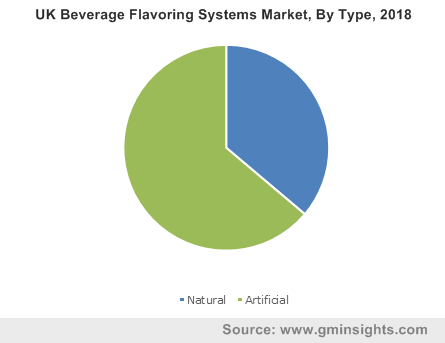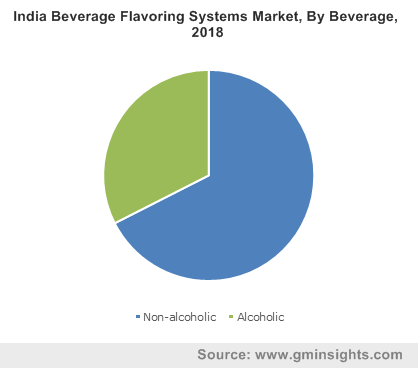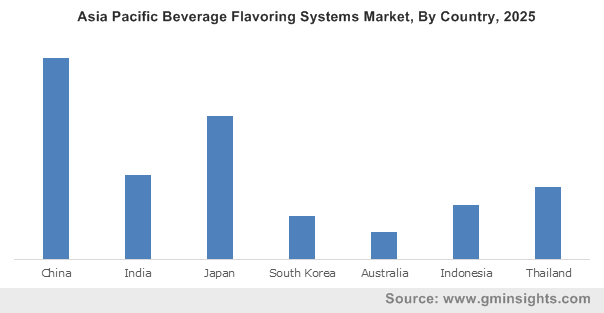Get a free sample of Global Beverage Flavoring Systems Market
Thank you!
Your inquiry has been received. Our team will reach out to you with the required details via email. To ensure that you don't miss their response, kindly remember to check your spam folder as well!
Form submitted successfully!
Error submitting form. Please try again.
Get a free sample of Global Beverage Flavoring Systems Market
Thank you!
Your inquiry has been received. Our team will reach out to you with the required details via email. To ensure that you don't miss their response, kindly remember to check your spam folder as well!
Form submitted successfully!
Error submitting form. Please try again.
Global Beverage Flavoring Systems Market Analysis
Flavoring agents account for more than 35% of the overall volume share in 2018. They are food and beverage additives derived from natural products such as fruits, vegetables, plants, and herbs, or from a mix of synthesized chemicals like esters, pyrazine, phenolics, etc. Flavoring agents impart better taste and aroma to the product. Strong growth in fruits production accompanied by increasing demand for natural flavoring is surging the segment share. Demand for concentrated flavors to match the desired taste profile will fuel the product penetration up to 2025.
Carriers or solvents are projected to witness the fastest growth in the global beverage flavoring systems market from 2019 to 2025. The commonly used carriers in the commercial flavors production include propylene glycol, ethyl alcohol, triacetin, and vegetable glycerin. Flavoring agents can be diluted using carriers or can be bound to carriers through encapsulation. Enhanced demand for encapsulated flavors will drive the segmental growth over the forecast timeframe.

Natural flavors are projected to witness gains at over 5.5% CAGR from 2019 to 2025. The key factors attributing to segmental growth include increasing consumer awareness on product quality & ingredients, shift in trend towards healthy lifestyle, and willingness to pay for premium products. Increasing availability of natural raw materials such as citrus fruits including grapes, oranges, limes, and lemons owing to rise in production rates is shifting the preference towards natural flavors. Further, consumer driven movements such as ‘clean label’ have urged the F&B manufacturers to use natural additives in their products.
Artificial flavors dominate the global beverage flavoring systems market in 2018. Artificial flavors are significantly lower prices than its counterparts, thus improving the profit margins of manufacturers. Further, ability of the manufacturer to replicate the taste of natural flavors supported by ease in product availability is among the primary aspects for higher product adoption rate.

Non-alcoholic beverage flavoring systems is projected to surpass 440 kilo tons by 2025. High economic growth coupled with rising disposable income will surge millennial spending on premium products. Rising demand for non-alcoholic beverage segment owing to increasing health awareness and changing lifestyle will surge the industry share. Increasing number consumers common health issues including obesity and diabetes will surge the demand for non-alcoholic drinks with low-sugar, low-salt, and fewer calories. Rising demand for carbonated soft drinks will foster the market share for beverage flavoring systems.
Alcoholic beverage flavoring systems will observe significant gains up to 2025. Growing preference for fruit-based alcoholic beverages supported by product innovation with new flavors will surge the business development. For instance, in April 2019, Smirnoff launched a low-alcohol spirit with real fruit essence and natural flavors. Further, strong demand for low-alcohol or dealcoholized beverages such as craft beer, non-alcoholic wine, and non-alcoholic beer with a variety of flavors are expected to boost the industry expansion.
Liquid flavor segment is projected to account for over USD 4.2 billion by 2025. Liquid flavors are widely accepted by beverage manufacturers as they are easy to blend and mix with the product. They provide homogenous distribution of flavors with other ingredients thus improving the product quality. Growing demand for fruit juice, carbonated drinks and healthy energy drinks in emerging economies will drive the demand for liquid beverage flavoring systems market.
Powder beverage flavoring systems are expected to witness 5.0% CAGR over the forecast timeframe. Dry flavors are easy to handle and have a greater shelf life. Emerging technologies in flavoring systems such as spray drying and extrusion process for encapsulation are creating better avenues for business expansion. Flavor powders find high scope in applications such as instant dry mixes as they can dissolve quickly in water. However, the additional cost of processing of dry flavors may restrain the product adoption.

The Asia Pacific region is anticiapted to hold over 35% share in the global beverage flavoring systems market by 2025 driven by countries including China, India, and Japan. Significant demand in the region is attributed to growth in beverage processing industry accompanied by rapid urbanization, economic development, and rise in population. Ease in raw material procurement, and availability of labor at lower rates are among the key factors contributing to the reduced cost of beverage flavoring systems in the region.
Majority of consumers are inclined towards low-alcoholic beverages with wide variety of flavors along with trend for diversified cocktails. The region wtinesses product launches in flavored water, iced tea, carbonated soft drinks, and sports drinks categories. Increasing comeptitiveness in the beverage industry supported by favorable trade policies is positively influencing the business expansion. Growing consumer demand for healthier drinks and changing labelling regulations will positively impact the beverage industry.